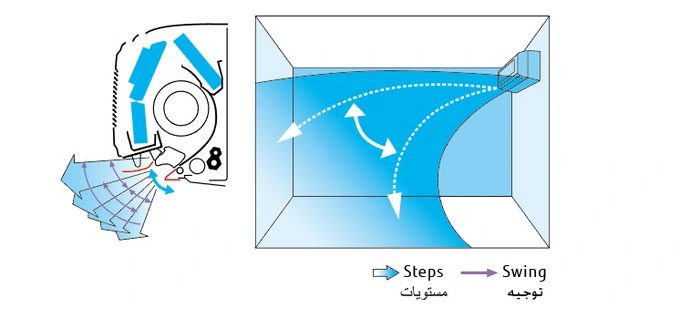In addition to setting the appropriate temperature, this adjustment will help cool your room quickly and save electricity.
Air conditioners are common appliances widely used in our country, but not everyone knows how to use them effectively. Beyond the basic factors, one aspect that many users overlook or misunderstand is the adjustment of the airflow direction.
In a quick exchange with a reporter, Mr. Lê Anh Công, an expert in electronics and refrigeration from Cầu Giấy District, Hanoi, stated that air conditioners can cool faster and save energy by directing the airflow upwards.
“Many people mistakenly direct the airflow too low or directly at the sitting position,” Mr. Công shared. “As a result, the air conditioner can only cool the local area it is directed towards, taking much longer to cool the entire room and consuming more electricity.”

Directing the airflow upwards helps cool a larger part of the room, thereby increasing cooling efficiency. (Photo: Fujitsu).
This is based on the fundamental principle of air expansion. Warm air is always lighter than cold air, and it tends to accumulate at the top. Conversely, cold air is heavier and tends to sink.
If the air conditioner vents do not prioritize directing airflow upwards, the air mass above will be very warm and will take a long time to cool the entire room. Therefore, users should prioritize directing the airflow upwards. This also allows for a more even distribution of cold air, enhancing cooling efficiency.
Mr. Công noted that the airflow speed also affects the cooling rate of the air conditioner. If you want to cool down quickly, set the fan to the highest speed and consider using an additional electric fan to enhance air circulation.
Conversely, if you feel cool enough, you can lower the fan speed to reduce the cooling process of the air conditioner while maintaining the desired temperature.
Additionally, here are some tips for using air conditioners effectively that readers may find helpful:
Select the Appropriate Capacity
Users should pay attention to the air conditioner’s capacity suitable for the room size. You can calculate this using the formula that 1 square meter of space corresponds to 500 BTUs of air conditioning capacity. According to this formula, simply multiply the room’s area accordingly.
Install the Air Conditioner in a Suitable Location
It is advisable to install the air conditioner in areas that receive minimal direct sunlight, such as the East or North directions. Users should also equip the room with curtains or tinted windows to reduce sunlight exposure while using the air conditioner, preventing the sun from raising the room temperature and causing the air conditioner to work harder.
Avoid Setting the Temperature Too Low
During use, to keep the air conditioner operating efficiently and save electricity, users should not set the temperature too low. This practice wastes energy and can make family members more susceptible to respiratory illnesses such as colds, coughs, and flu.
Regularly Clean the Air Conditioner
To extend the lifespan of the air conditioner, users need to regularly clean and maintain the unit. Ideally, the air conditioner should be cleaned once every three months to prevent dust accumulation, which can obstruct cold airflow.


















































